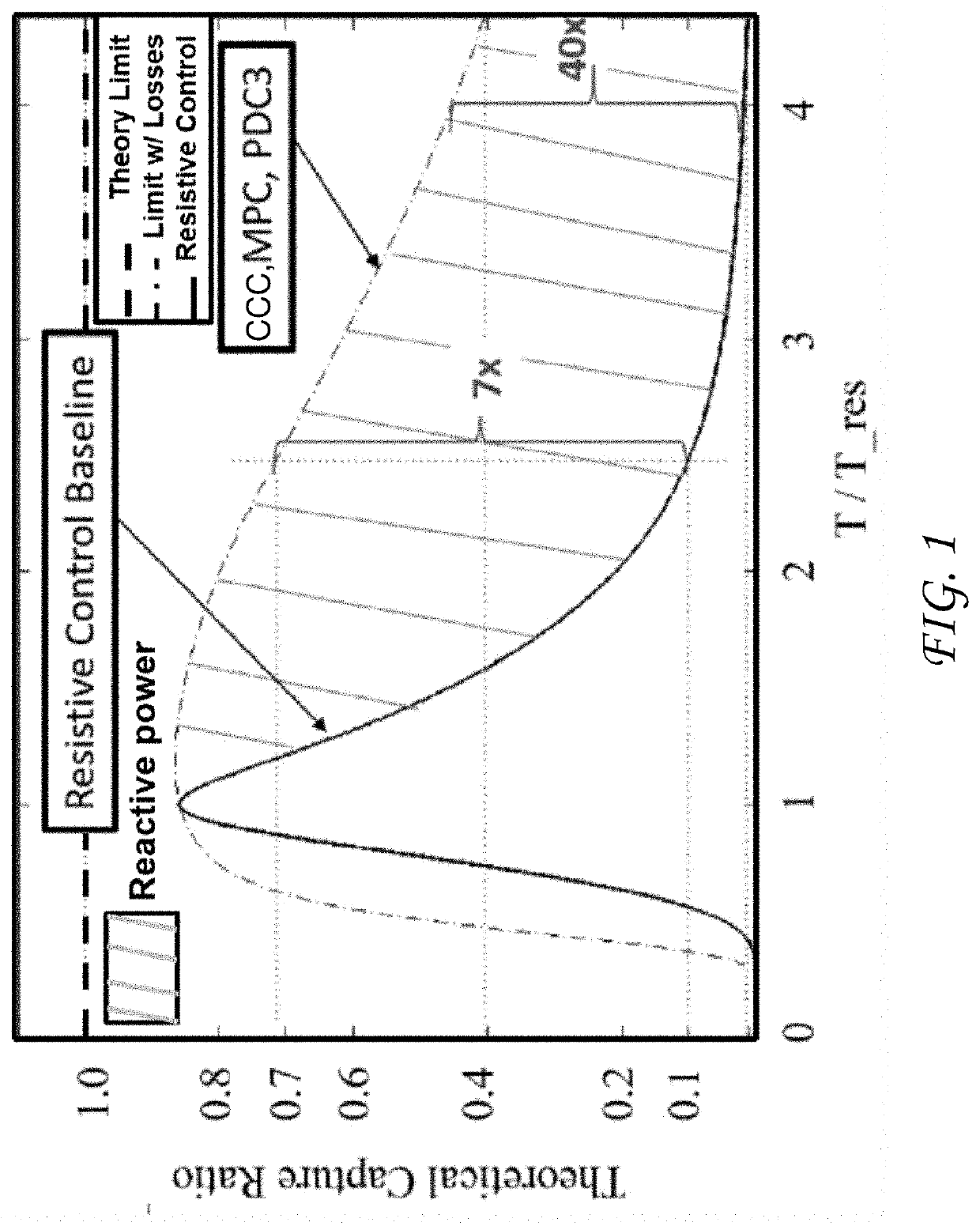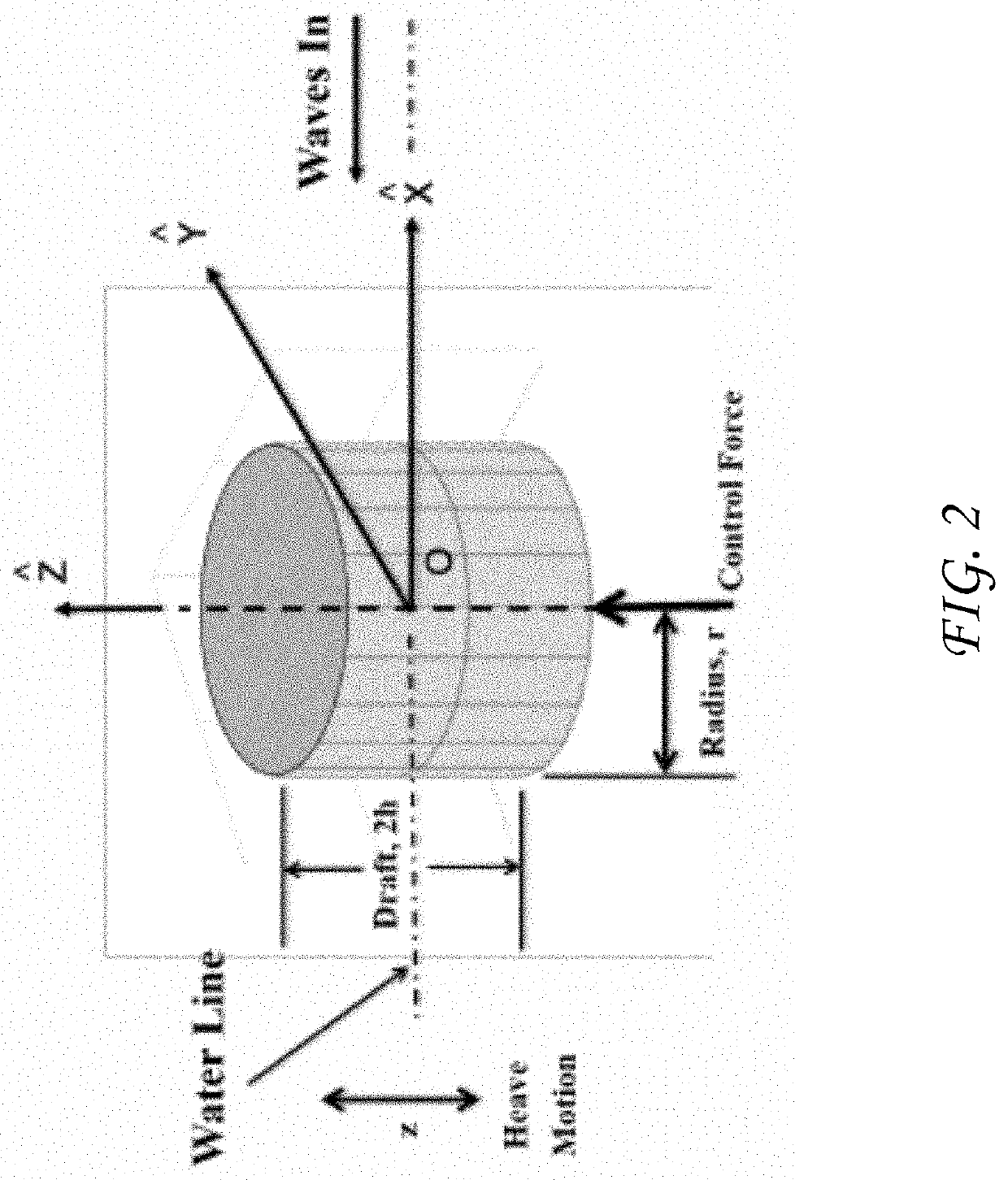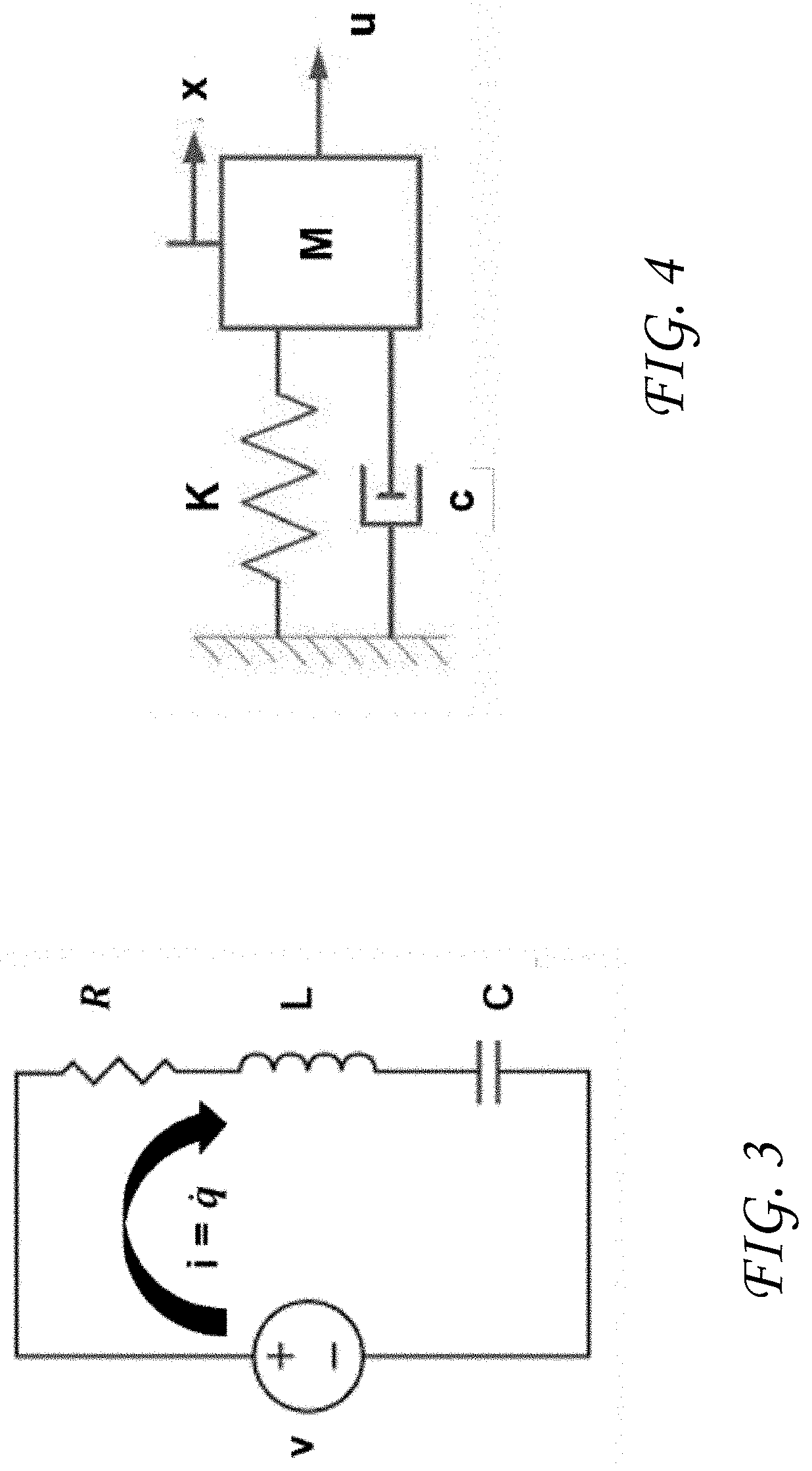Nonlinear Hydrostatic Control of a Wave Energy Converter
a wave energy converter and hydrostatic control technology, applied in special-purpose vessels, machines/engines, transportation and packaging, etc., can solve the problems of increasing the complexity of reactive power requirements, reducing the efficiency of wec operation, and increasing so as to maximize energy harvesting or extraction, increase the capture width, and increase the draft and speed of nonlinear buoys
- Summary
- Abstract
- Description
- Claims
- Application Information
AI Technical Summary
Benefits of technology
Problems solved by technology
Method used
Image
Examples
case study simulation results
[0078]Exemplary case studies and simulation results are described below for: i) nonlinear resonator, ii) single frequency inputs, and iii) multi-frequency spectrum inputs. A simplified optimal HG WEC design (optimize a subject to volumetric constraints leading to draft limits) is contrasted with a RCC WEC design. A volume constraint on displaced fluid is imposed on both the RCC and HG buoys to be equivalent:
VHG=VRCC. (41)
[0079]The position constraint for the RCC and the HG WECs resulted in the draft limits shown in Table 2. The simplified optimization for the HG WEC, used for the Bretschneider spectrum, is a function of α which constrains the heave motion and the wave height. Note that α will be sea state dependent and can be adapted to meet each specific sea state condition for the actual application. For this example, the buoy effective mass was m=1.76×105 kg, the linear damping coefficient was b=170 Ns / m, and linear stiffness coefficient was k=4.544915×105 kg / s2. The nonlinear s...
PUM
 Login to View More
Login to View More Abstract
Description
Claims
Application Information
 Login to View More
Login to View More - R&D
- Intellectual Property
- Life Sciences
- Materials
- Tech Scout
- Unparalleled Data Quality
- Higher Quality Content
- 60% Fewer Hallucinations
Browse by: Latest US Patents, China's latest patents, Technical Efficacy Thesaurus, Application Domain, Technology Topic, Popular Technical Reports.
© 2025 PatSnap. All rights reserved.Legal|Privacy policy|Modern Slavery Act Transparency Statement|Sitemap|About US| Contact US: help@patsnap.com



